If you've ever walked into a spice market and caught a whiff of something floral, citrusy, and almost magical — there's a good chance it was green cardamom. Known as the "Queen of Spices," this aromatic pod is a staple in Indian kitchens, Middle Eastern desserts, and even Scandinavian baking. But for all its global charm, many home cooks are still unsure how to use it to its full potential.
In this article, we'll explore everything you need to know about green cardamom — from where it comes from, how to use it like a pro, and how to pick the best pods when shopping. Whether you're a seasoned chef or just starting out with spices, this guide will make you fall head over heels for cardamom.
| Form | Quality Indicators | Best For |
|---|---|---|
| Whole Pods | Firm, greenish-gray color; plump and slightly springy; strong aroma when crushed | Cooking methods where appearance matters (e.g., biryanis, teas), long shelf life |
| Ground Powder | Vibrant green hue; fresh scent; stored in airtight containers | Baking, rubs, sauces, or when texture isn't important |
| Seeds Only | Dark brown/black seeds visible inside cracked pods; aromatic | Custom grinding at home, infusions |
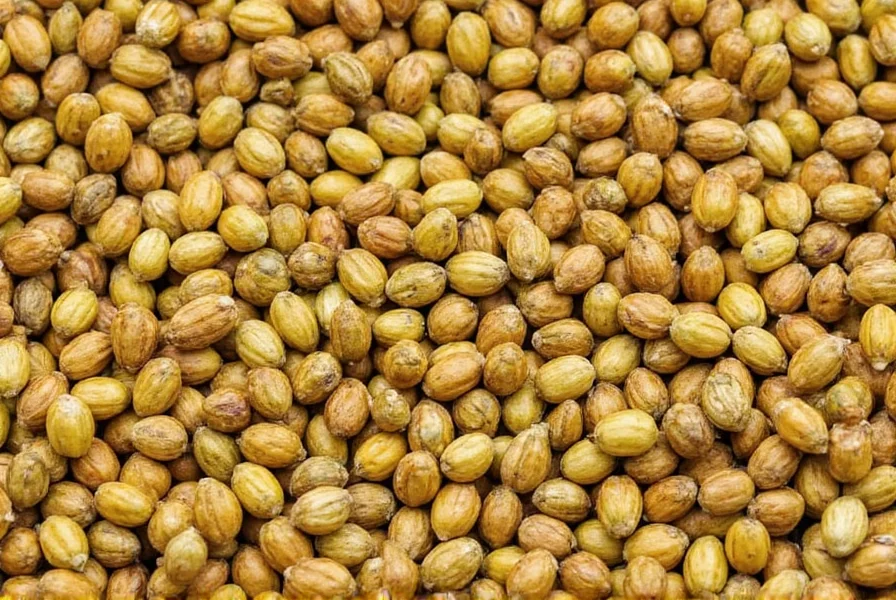
What Is Green Cardamom?
Green cardamom (scientific name: Elettaria cardamomum) is a member of the ginger family. Native to southern India, it grows in warm, humid climates and has been used for thousands of years in both culinary and medicinal applications.
The spice itself comes from the dried seed pods of the plant. Each pod contains tiny black seeds that pack an intense, sweetly spicy flavor profile with hints of eucalyptus, citrus, and mint. While there's also black cardamom, which has a smokier, more robust flavor, green cardamom is by far the most popular variety globally.
Why Is It So Special?
Of all the spices in your pantry, few can rival the versatility and richness of green cardamom. Here's what makes it stand out:
- Potent aroma: Even a single pod can fragrance an entire dish.
- Broad application: From chai tea to baklava, soups to desserts — it works everywhere.
- Medicinal properties: Used in Ayurveda for digestion, breath freshening, and detoxification.
- Luxurious reputation: Often dubbed "green gold," it's among the world's most expensive spices.
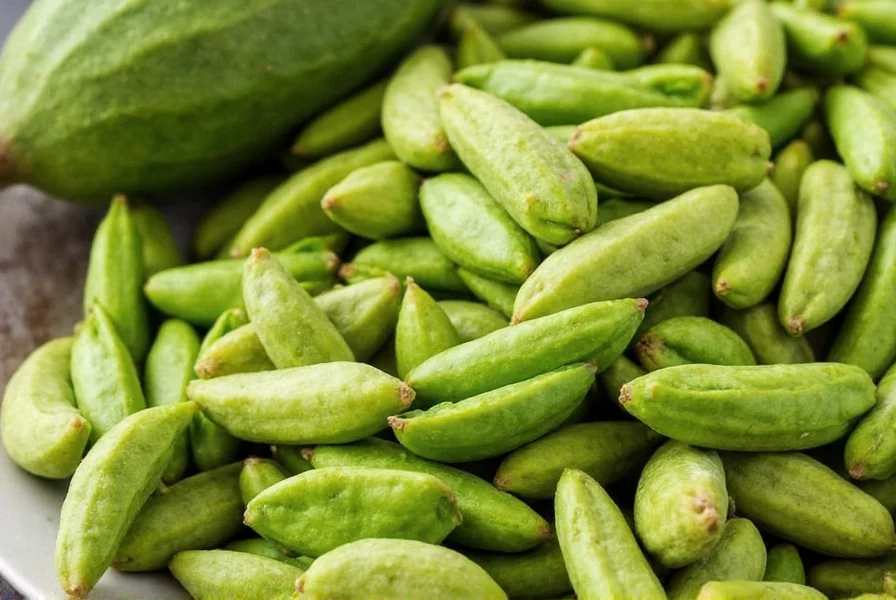
Top 7 Ways to Use Green Cardamom Like a Spice Pro
You don't have to be Indian or Middle Eastern to enjoy green cardamom — here are seven clever ways to weave it into your cooking:
- Brew the Ultimate Chai
Add 2–3 crushed pods to boiling water before adding milk and tea leaves. The result? A fragrant, uplifting cup that feels like a warm hug in a mug. - Boost Your Rice Dishes
Whole pods simmered in rice absorb moisture and release a subtle sweetness. Perfect for biryanis, pilafs, and even sushi rice. - Sweeten Desserts Naturally
Grind the seeds and mix them into cakes, cookies, puddings, or custards. Try cardamom in your next banana bread or rice kheer recipe! - Spice Up Your Coffee
Add a pinch of ground cardamom to your coffee grounds before brewing. The result is smoother, more aromatic java. - Flavor Meat Rubs
Use ground cardamom in spice blends for lamb, chicken, or beef. Pair it with cinnamon, cloves, and cumin for a warming, complex flavor profile. - Mix Into Smoothies
A dash of ground cardamom in smoothies brings a surprising freshness — especially with bananas, dates, and coconut milk. - Make DIY Cardamom Extract
Crush seeds and soak them in alcohol (like vodka or brandy) for 4–6 weeks. Use this homemade extract in baked goods, sauces, or cocktails.
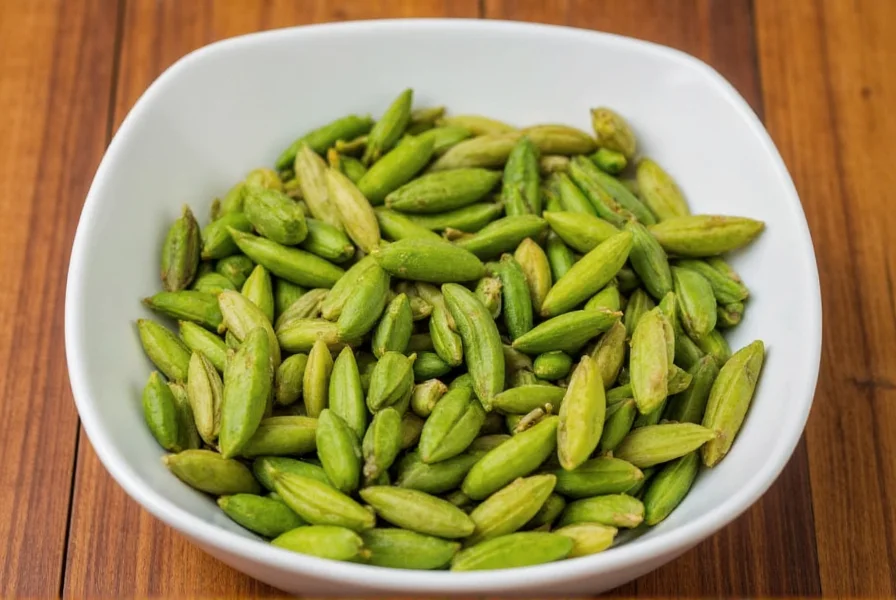
Buying Guide: How to Choose the Best Green Cardamom
Not all cardamom is created equal! Here's how to pick high-quality pods or powder every time:
- Country of Origin: Kerala, India produces some of the finest cardamom in the world. Look for "Malabar" or "Alleppey" varieties.
- Packaging: Avoid plastic bags unless they're resealable. Glass jars preserve flavor better.
- Price: Quality cardamom doesn't come cheap. If it seems too affordable, it might be old or low-grade.
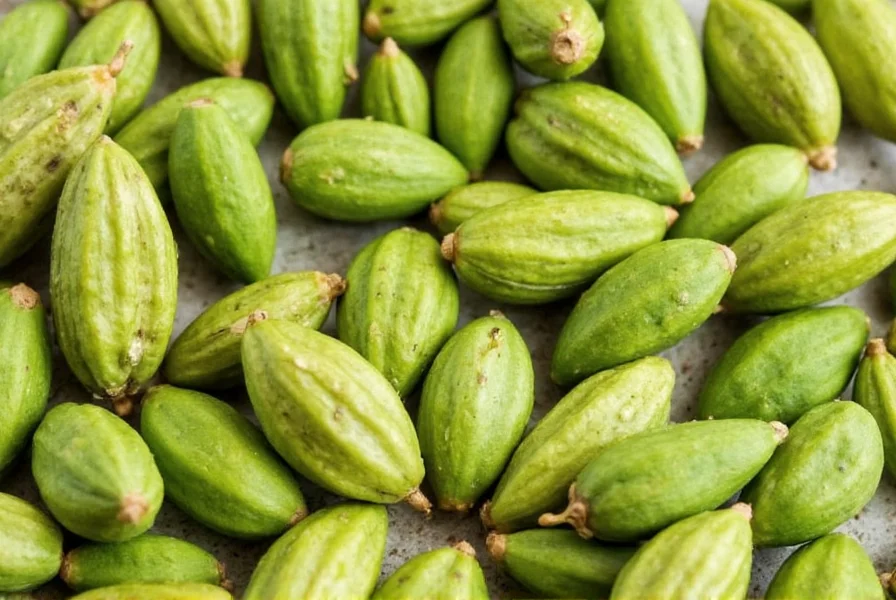
How to Store Cardamom Like a Pro
Green cardamom is a volatile spice — meaning its flavors and aromas degrade quickly when exposed to air, heat, or light. Here's how to keep it tasting fresh:
- Whole Pods: Keep them in an airtight glass jar away from sunlight. Stored properly, they last up to a year.
- Ground Powder: Use within 3–6 months for maximum potency. Grind only what you need if possible.
- Freezing: Whole pods can be frozen in sealed bags to extend shelf life without losing aroma.
- Labeling: Always note the date of purchase on the container so you know when to replace it.
Cardamom Around the World: How Different Cultures Use This Spice
Though rooted in South Asia, green cardamom has traveled far and wide. Let's take a quick culinary tour around the globe:
- India: Found in masala chai, garam masala, sweets like barfi, and savory dishes like pulao and biryani.
- Middle East: Added to coffee (especially in Saudi Arabia and UAE), baklava, and meat stews.
- Scandinavia: Baked into Swedish "kardemummabullar" buns and Norwegian cakes.
- Gulf Countries: Blended into traditional rice dishes like machboos and thareed.
- North Africa: Mixed into spiced butter called "smen" and used in tagines and couscous.
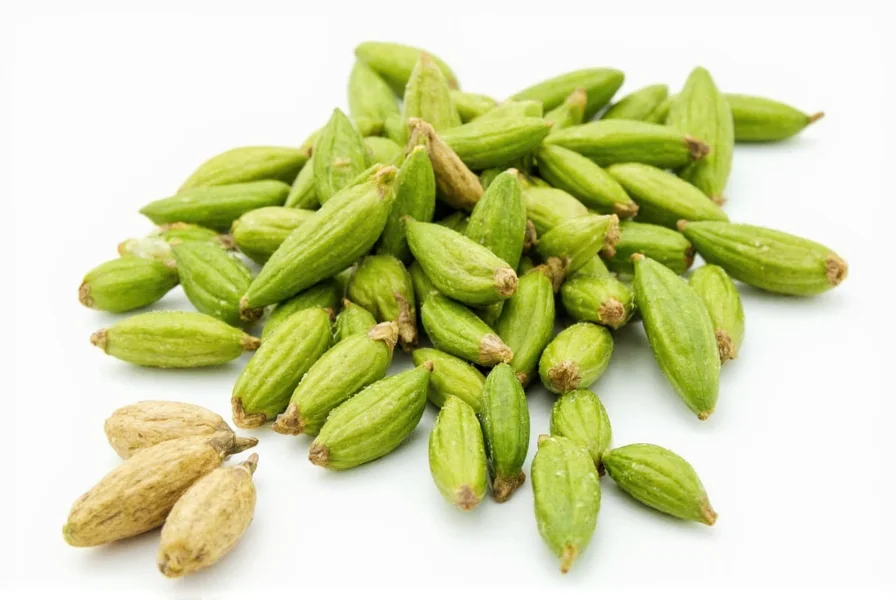
Frequently Asked Questions About Green Cardamom
What's the difference between green and black cardamom?
Green cardamom (Elettaria cardamomum) has a bright, floral, citrusy flavor with minty notes, while black cardamom (Amomum subulatum) has a much smokier, more intense, almost camphorous flavor. Green cardamom is generally used in sweet dishes and lighter savory preparations, while black cardamom works better in hearty stews and strongly flavored dishes. They are not interchangeable in most recipes.
How much cardamom should I use in recipes?
Less is often more with cardamom due to its potent flavor. For most dishes serving 4-6 people: use 3-5 whole pods (seeds removed), or 1/4 to 1/2 teaspoon of freshly ground cardamom. In baking, start with 1/8 to 1/4 teaspoon per recipe and adjust to taste. Remember that cardamom's flavor intensifies with cooking time, so add it toward the end of cooking for more pronounced flavor.
Can I substitute ground cardamom for whole pods?
Yes, but with some considerations. As a general rule: 10 whole cardamom pods ≈ 1½ teaspoons of seeds ≈ ½ teaspoon of ground cardamom. However, whole pods offer a more nuanced flavor that infuses gradually, while ground cardamom delivers immediate, more intense flavor. For best results, grind your own from seeds when possible, as pre-ground cardamom loses potency quickly.
Is green cardamom good for health?
Yes, green cardamom has several health benefits. It's traditionally used in Ayurvedic medicine to aid digestion, relieve nausea, and freshen breath. Studies suggest it may have antioxidant, anti-inflammatory, and antimicrobial properties. It's also been associated with lowering blood pressure and improving respiratory function. However, it should be consumed as part of a balanced diet, not as a replacement for medical treatment.
How can I tell if my cardamom has gone bad?
Fresh green cardamom should have a vibrant aroma with citrus and floral notes. Signs it has gone bad include: no aroma when crushed, faded color (turning brown instead of green-gray), musty smell, or a stale taste. Whole pods keep their potency much longer than ground cardamom - typically up to a year when stored properly versus 3-6 months for ground. The best test is to crush a pod and smell it - if the aroma is weak or absent, it's time to replace it.
What are the best dishes to use green cardamom in?
Green cardamom shines in both sweet and savory dishes. For sweets: Scandinavian buns, Indian desserts (like kheer), rice pudding, apple pie, and chocolate desserts. For savory dishes: Indian biryanis and curries, Middle Eastern rice dishes, Moroccan tagines, and even some seafood preparations. It also works wonderfully in beverages like chai, coffee, and hot chocolate. The key is to use it where its floral, citrus notes can complement other ingredients without being overwhelmed.
Can I grow my own green cardamom?
Growing green cardamom requires specific conditions that mimic its native habitat in southern India. It needs tropical or subtropical climate (USDA zones 10-12), high humidity, partial shade, and well-draining, rich soil. The plants take 2-3 years to mature and produce pods. While challenging outside its native range, some gardeners have success growing it in greenhouses or as a houseplant in cooler climates. The plants are perennial and can produce for up to 15 years once established.
Fun Cardamom Facts You Probably Didn't Know
Let's wrap things up with some quirky tidbits about everyone's favorite green spice:
- World's Third Most Expensive Spice: After saffron and vanilla, cardamom takes third place due to labor-intensive harvesting.
- Used as a Toothpaste Ingredient: Ancient Greeks and Romans chewed cardamom to clean teeth and freshen breath.
- Chewing Pod = Natural Breath Freshener: In many cultures, cardamom is served after meals as a mukhwas (mouth freshener).
- Cardamom Trees Exist!: In India, farmers sometimes grow shade trees specifically for supporting cardamom vines.
- Dogs Love It Too?: Some holistic pet stores sell cardamom-based treats for dogs claiming digestive benefits.
Final Thoughts
Green cardamom may seem like just another exotic spice at first glance, but once you unlock its secrets, it becomes a kitchen essential with near-endless possibilities. Whether you're brewing tea, spicing up your Sunday roast, or baking a cozy dessert, cardamom adds a touch of luxury and complexity that few other spices can match.
Remember: quality matters. Invest in fresh, aromatic pods, store them right, and experiment fearlessly. With a little practice, you'll soon be impressing friends and family with your cardamom-infused creations — and maybe even earning the title of "Home Cardamom Queen" yourself!
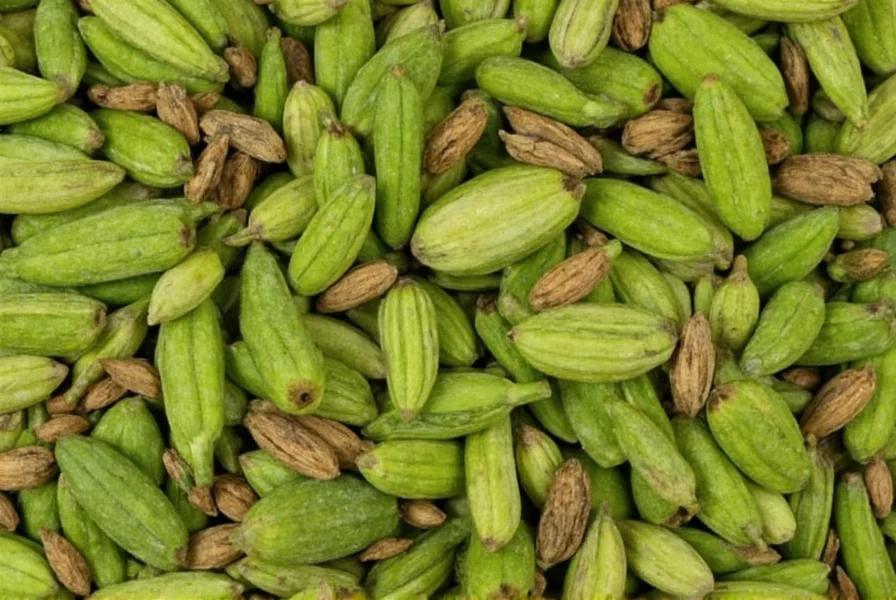
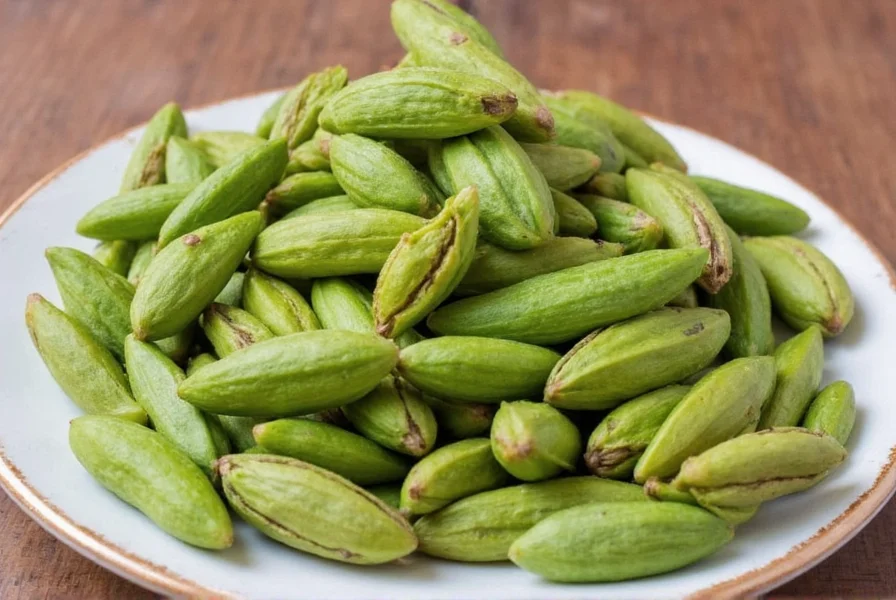

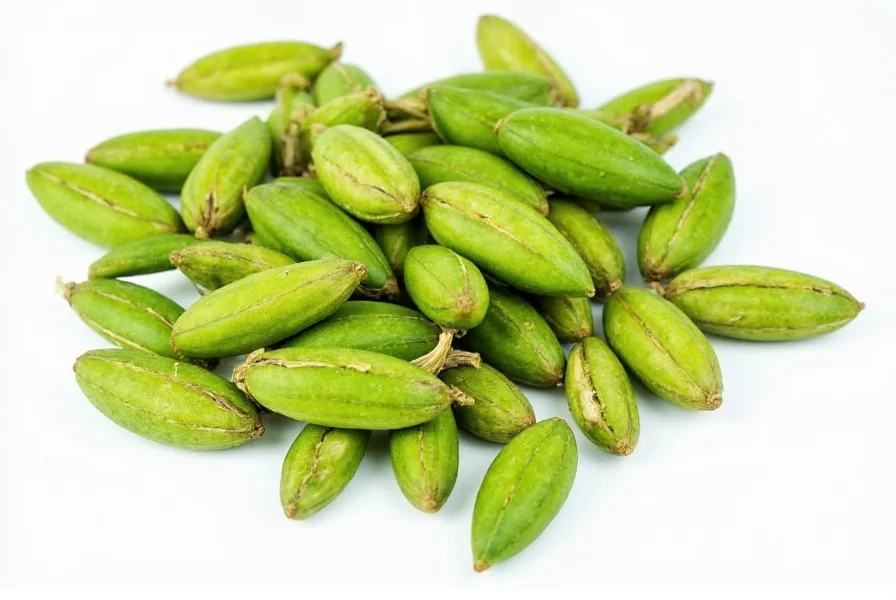









 浙公网安备
33010002000092号
浙公网安备
33010002000092号 浙B2-20120091-4
浙B2-20120091-4